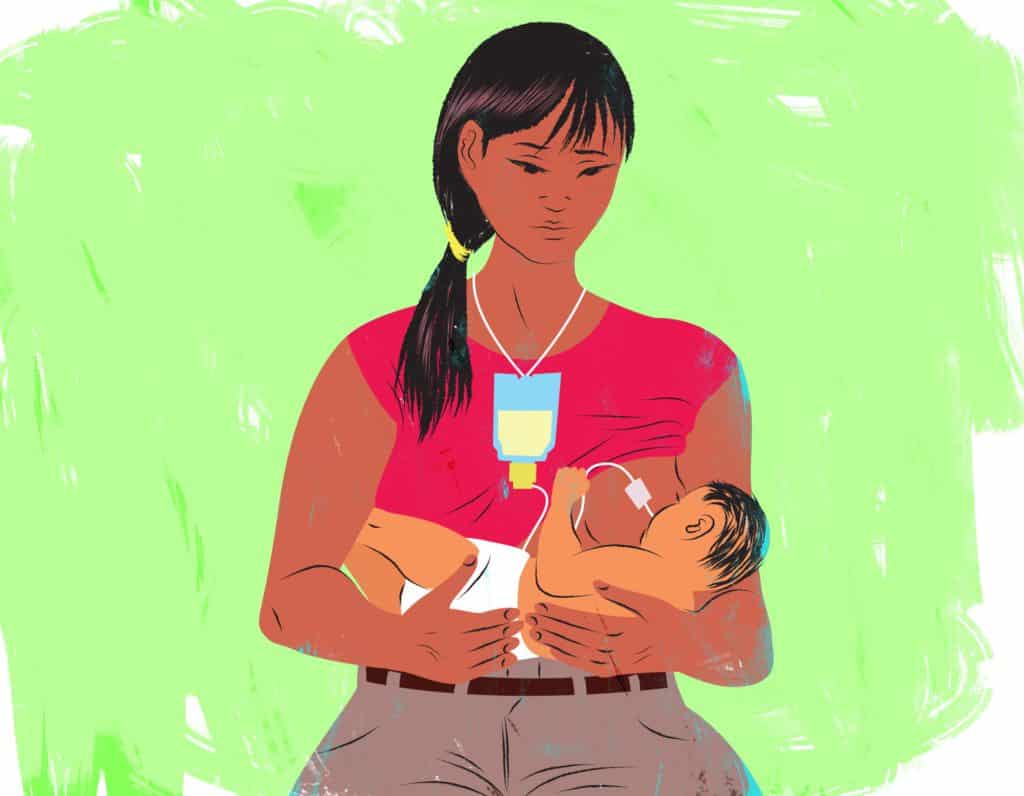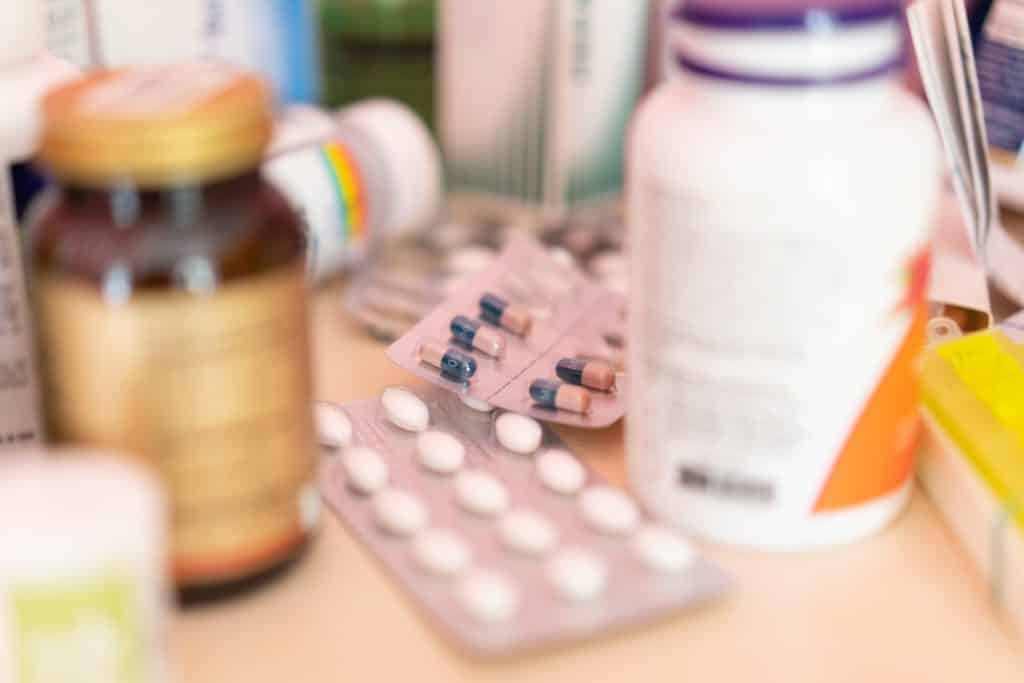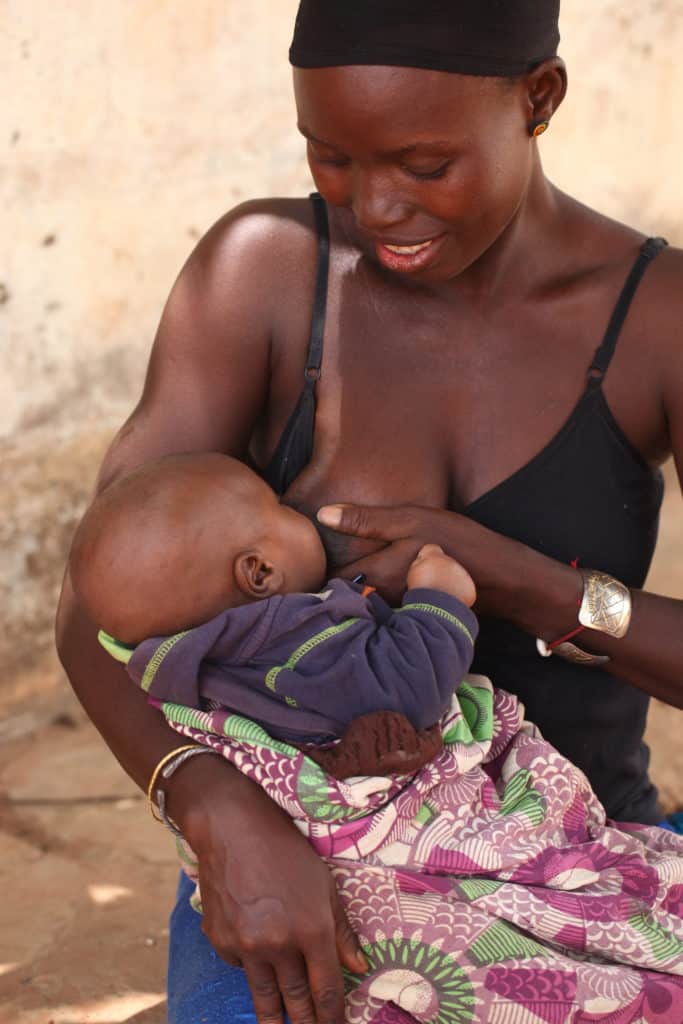“Maybe you just need to give it a little more effort”
“Have you tried drinking more water?”
“I heard fenugreek helps mothers like you”
Many mothers who have difficulties with milk production receive this sort of advice countless times from family and friends (well, most have good intentions).
While most women produce more than enough milk for their babies, a small percentage of mothers find breastfeeding to be quite challenging.
Why Can’t I Make Enough Milk For My Baby?
Some mothers feel that they can not make enough milk for their babies because they have small breasts.
However, this is not true.

The size of a woman’s breast does not influence how much milk she can produce in anyway. A more reasonable cause for insufficient milk production is insufficient glandular tissue (IGT).
Glandular tissue is the milk-making tissue in a woman’s breast.
Therefore, breast milk production will be low if the glandular tissue present is insufficient to produce enough milk. Women with insufficient glandular tissue struggle with producing enough milk for their babies, even after practicing good breastfeeding management.
A word of caution!
Insufficient glandular tissue is a diagnosis of exclusion. Other factors that can affect breastmilk supply must be investigated first by your health provider or lactation consultant and found to be absent. Some of these include:
- Hormonal imbalances (eg. thyroid or due to retained placenta)
- Previous breast surgery
- Issues with the baby’s ability to suckle and drain the breast (latching, tongue tie, cleft lip)
- Not putting baby to breast enough.
Physical Signs of Insufficient Glandular Tissue
Signs In Mother
It is important to emphasize that the size of your breast has no bearing on your glandular tissue or ability to breastfeed.

Women with small and large breast can suffer from insufficient glandular tissue. Some physicals signs that can indicate insufficient glandular tissue are;
- Asymmetric Breasts; In this case, one breast being much larger than the other
- Breasts that are tubular shaped (narrow at the base and long instead of round, quite like bananas)
- Very large and bulbous areolae; The areola is the dark skin around your nipple. When this occurs. the areola may look as if they are a separate structure from the breasts.
- Wide-spaced breasts (The gap between both breasts can be up to 4cm )
- No breast changes during or after pregnancy. This is something that should be taken note of during your antenatal. We expected your areola to darken, breasts to become larger and so on.
The more of these signs a woman has, the greater her chances of having insufficient glandular tissue.
Signs In Baby
In the setting of glandular hypoplasia, the baby will show signs of not getting enough breast milk. Some of these include:
- loosing more than 10% of birth weight,
- failure to return to birth weight by 2 weeks,
- having less than the required number of wet or poopy diapers for their age,
- gaining less than 20g of weight daily between 2 weeks old to 3 months old.
What Can You Do?
Some mothers who have difficulty breastfeeding can easily adapt to using other measures like formula feeding.

However, for a mother who anticipated breastfeeding as an important part of her mothering journey, the reality of being unable to breastfeed can be a very hard pill to swallow.
Fortunately, there are some things these mothers can do to preserve the breastfeeding experience.
1. Use A Breastfeeding Supplement Tool
One thing some mothers with insufficient glandular tissue can try is using an at-breast supplementing tool.

This tool is made up of a small, thin tube with one end attached to the skin around the mother’s nipple. This is the end that goes into the baby’s mouth. The other end is connected to a container that contains the feeding supplement.
This supplement could be the mother’s own expressed milk, milk from a donor, or infant formula. The amount of supplement required will depend largely on the amount of milk the mother is able to produce on her own. With this method, it is possible for mother who has difficulty with milk production to still experience breastfeeding.
2. Prescribed Medications
Some mothers with insufficient glandular tissue may still be able to breastfeed and produce most of the milk their babies will need.
Certain approved medication can greatly increase their milk supply and reduce the need of supplements to just once or twice a day. Before considering this option, remember to consult your doctor.

3. Bottle Feed First, Breastfeed Later
This is also an effective method of maintaining a breastfeeding relationship with your baby.

Since your body can not produce enough milk, you can feed your child with infant formula first. Then once she is beginning to have her fill, you let her finish at your breast.
A Final Note
No matter how little milk you may be able to make, it is still very precious and valuable to your baby.
Thankfully, most mothers with insufficient glandular tissue find that their breast milk supply improves with subsequent babies. This is because each pregnancy and breastfeeding experience causes an increase in glandular tissue.

We understand that being unable to produce enough milk to breastfeed your child may be difficult to accept.
However, all hope is not lost.
With support from a lactation specialist many mothers with insufficient glandular tissue can still enjoy fulfilling breastfeeding experiences.
REFERENCES
- Huggins, K., Petok, E., & Mireles, O. (2000). Markers of lactation insufficiency: a study of 34 mothers. Current issues in clinical lactation, 25-35. Retrieved from http://www.sonic.net/~mollyf/igt/.
- West, D., & Marasco, L. (2008). The Breastfeeding Mother’s Guide to Making More Milk. New York: McGraw-Hill.
- Marasco, L., Marmet, C., & Shell, E. (2000). Polycystic ovary syndrome: a connection to insufficient milk supply? Journal of Human Lactation, 16(2), 143-148.

